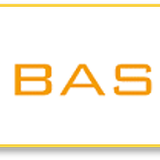Pengaruh GDP, Ekspor Dan Investasi Terhadap Inflasi Di Lima Negara Anggota IDB
DOI:
https://doi.org/10.24912/je.v25i1.628Abstract
The aim of this study is to find out how much influence GDP, exports and investment have on inflation in the five IDB member countries, namely Guinea, Malaysia, Indonesia, Brunei and Jordan. The results obtained by using a quantitative analysis of panel data re-salutations resulted that there was an influence of GDP, exports and investment on inflation but not significantly to these five IDB member countries. Many outlier factors also influenced one of them because the interest-free economy began to be implemented. This study wants to observe what factors influence inflation in the country of Guinea which is one of the IDB member countries that has the poorest characteristics among other countries. The results obtained using quantitative analysis methods of multiple linear regression panel data and classical assumptions produced that the three independent variables affect the dependent variable but are not significant. Where the relationship between DGP and inflation is positive, meaning that if GDP rises, inflation also rises. While the relationship between exports and investment to inflation is negative. This means that if exports rise, inflation will decrease and if investment rises, inflation will fall. So in general the government policies of the five IDB member countries must be more pro-aligned to raise the level of exports and investment in the country both foreign investment and domestic investment to help reduce the level of domestic inflation.
References
Agustina dan Reny, (2014). “Pengaruh Ekspor, Impor, Nilai Tukar Rupiah dan Tingkat Inflasi terhadap Cadangan Devisa Indonesia”, Jurnal Wira Ekonomi Mikroskil, Vol 4 No. 2 hal. 69.
Agustina Hilda.(2015). Negara Guinea https://hildaagustina.blogspot.com/2015/06/negara-guinea.
Aji Tony Seno dan Musdholifah. (2007). Analisis Pengaruh Variabel Makroekonomi terhadap Inflasi di Indonesia (Inflasi, Defisit Anggran Pemerintah, Produksi Minyak dan Gas Bumi, jumlah uang yang beredar, tingkat suku bunga, nilai tukar rupiah terhadap dolar Amerika.
Al Quran. Kitab Suci agama Islam.
Alotaibi, A. R. and Mishra, A. V. (2014). Determinants of International Financial Integration of GCC Markets Emerging Markets and the Global Economy, Elsevier, http://dx.doi.org/10.1016/B978-0-12-411549-1.00031-4.
Aryawan I Made Gitra (2009) Pengaruh Jumlah Uang Beredar dan PDB Terhadap Laju Inflasi di Indonesia Tahun 2000-2007 (Inflasi, Jumlah Uang Beredar, PDB).
Asamoah, M. E., Adjasi, C.K.D., and Alhassan, A.L. (2016). Macroeconomic Uncertainty, Foreign Direct Investment And Institutional Quality: Evidence from Sub-Saharan Africa. Economic Systems, 40(4), 612-621.
Baltas, N.C. (2013). The Greek Financial Crisis and the Outlook of the Greek Economy. Journal of Economic Asymmetries, 10(1), 32-37. https://doi.org/10.1016/j.jeca.2013.09.002.
Benny, Jimmy. (2013). “Ekspor Dan Impor Pengaruhnya Terhadap Posisi Cadangan Devisa Di Indonesia”. Jurnal Ekonomi, Manajemen, Bisnis dan Akuntansi, 1 (4): 1406-15.
Binici, M., Cheung, Y.-W., and Lai, K.S. (2012). Trade Openness, Market Competition, And Inflation: S ome sectoral evidence from OECD countries. International Journal of Finance Economics, 17(4), 321-336.
Boediono, (1988). Ekonomi Moneter, Edisi 3, BPFE, Yogyakarta.
Busse, M., and Hefeker, C. (2007). Political Risk, Institutions And Foreign Direct Investment. European Journal of Political Economy, 23(2), 397-415. https://doi.org/10.1016/j.ejpoleco.2006.02.003.
Committee for Economic and Commercial Coorporation of The Organization of Islamic Coorperation (COMCEC), (2018). COMCEC Trade Outlook. Ankara: COMCEC Coordination Office.
Committee for Economic and Commercial Coorporation of The Organization of Islamic Coorperation (COMCEC), (2019). Annual Report On Trade Among The OIC Member State. Ankara: The Islamic Centre for Development of Trade.
Dumairy. (1999). Perekonomian Indonesia. Jakarta: Penerbit Erlangga.
Fahmi, I. (2014). Manajemen keuangan perusahaan dan pasar modal. Jakarta: Mitra Wacana Media.
Gujarati, D. N., and Porter, D. C. (2009). Basic Econometrics (5th ed.). New York: McGraw-Hill/Irwin.
Herrera-Echeverri, H., Haar, J., and Estevez- Breton, J. B. (2013). Foreign Direct Investment, Institutional Quality, Economics Freedom and Entrepreneurship in Emerging Markets. Journal of Business Research, 1921-1932. http://doi.org/10.1016/j.jbusres.2013-11-020.
https://anisullailahputri.wordpress.com/2015/06/17/pengaruh-inflasi-dan-pendapatan-terhadap-impor/. https://doi.org/10.1016/j.ecosys.2016.02.010
https://isdbdata.github.io/monograph2017.html.
https://www.diedit.com/negara-terkaya-di-dunia/.
https://www.gurugeografi.id/2017/05/perbedaan-gnp-gdp-dan-gni.html.
Huda Nurul et al 2012 Islamic public Finance: theoretical and historical approaches (Jakarta: Kencana)
Ikasari Hertiana. (2015). Determinan Inflasi (Pendekatan Klasik) Laju inflasi, Uang Primer, PDB Riil Journal of Economic Studies Emerald Insight 2015.
Kang. J.W. and Dagli. S. (2018). Internasional Trade and Exchange Rates. Journal of Applied Economics, Vol. 21, No. 1, 84-105, https://doi.org/10.1080/15140326.2018.1526878.
Kaufmann, D., Kraay, A., and Mastruzzi, M. (2010). The Worldwide Governance Indicators Methodology and Analytical Issue (No. 5430).
Kurniawan Dedi (2008). Regresi Linier R Development Core Team (2008). R: A language and environment for statistical computing. R Foundation for Statistical Computing, Vienna, Austria. ISBN 3-900051-07-0, URL http://www.R-project.org.
Listiani Nurlia. (2006). Faktor-Faktor Determinan yang Mempengaruhi Tingkat Inflasi di Indonesia periode 1970-2004 (IHK, GDP riil, nilai tukar riil, pertumbuhan upah riil, pertumbuhan JUB, pertumbuhan harga impor).
Majid, M Nazori. (2003) Pemikiran Ekonomi Islam Abu Yusuf Relevansinya dengan Ekonomi Kekinian. Jakarta; Pusat Studi Ekonomi Islam (PSEI).
Majoka, M. I., Sahibzada, H. E., and Khan, M.S. (2012). Resources of The Muslim World: A Reflection on the Muslim World's Resources, Their Development and Utilization. Journal of Islamic Thought and Civilization (JITC), 2(1).
Mendonca, H. F. D. and Nascimento, N.C. (2018). Monetery Policy Eficiency And Macroeconomic Stability: Do Financial Openness And Economic Globalization Matter? North American Journal of Economics and Finance, 1-20. https://doi.org/10.1016/j.najef.2018.10.018.
Miller, T., Kim, A. B., Roberts, J. M. and Tyrrell, P. (2019). Highlight of The 2019 Index of Economic Freedom. Washington, DC: The Heritage Foundation.
Mishkin, F. s. (2008). Ekonomi Uang, Perbankan, dan Pasar Keuangan Edisi 8. Jakarta: Salemba Empat.
Nanga Muana. (2005). Makroekonomi Teori Masalah dan Kebijakan Ed kedua (Jakarta: PT Raja Grafika Persada).
Nurfadhilla, L. (2019). Pengaruh Sistem Pembayaran Non-Tunai Pada Era Digital Terhadap Tingkat Inflasi Di Indonesia. Jurnal Ekonomi dan Bisnis.
Setyawati, Irma. (2017) Does Financial Performance Of Islamic Banking Is Better? European Research Studies Journal.
Sonia, Agnes dan Nyoman Djinar Setiawina. (2016). “Pengaruh Kurs, Jub Dan Tingkat Inflasi Terhadap Ekspor, Impor Dan Cadangan Devisa Indonesia” E- Jurnal Ekonomi Pembangunan. Universitas Udayana, Vol. 5, No. 10. : 1077- 1102.
Todaro, P. (2002). Pembangunan Ekonomi Dunia ke Tiga,Edisi 7. Erlangga. Jakarta.
Tulus, T. (2008). Pembangunan Ekonomi dan Utang Luar Negeri. Jakarta: Rajawali.
Downloads
Published
How to Cite
Issue
Section
License
Copyright (c) 2020 Jurnal Ekonomi

This work is licensed under a Creative Commons Attribution-NonCommercial-ShareAlike 4.0 International License.
This journal provides immediate open access to its content on the principle that making research freely available to the public supports a greater global exchange of knowledge.

This work is licensed under a Creative Commons Attribution-NonCommercial-ShareAlike 4.0 International License.


















